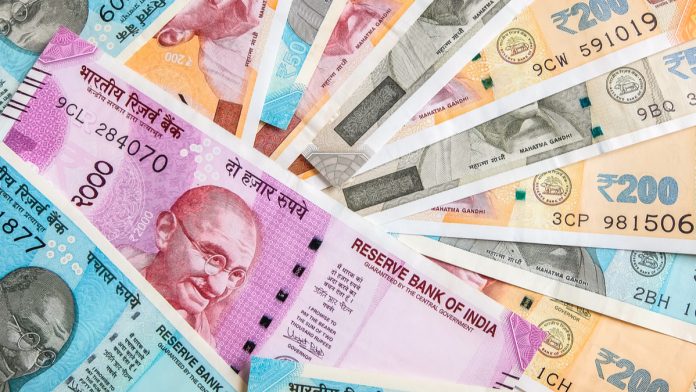- Indian Rupee (INR) under pressure as covid cases surge to 1.24 million
- Investors shrug off upbeat comments regarding recovery from Finance Minister
- US Dollar (USD) trades broadly lower on US stimulus optimism
- US jobless claims could unnerve investors as improvement in labour market stalls
The US Dollar Indian Rupee (USD/INR) exchange rate is pushing higher on Thursday, for a second consecutive day. The pair settled higher on Wednesday at 74.61. At 09:30 UTC, USD/INR trades +0.2% at 74.78.
Soaring coronavirus cases in India are overshadowing upbeat comments from the Finance Ministry. According to Finance Minister Nirmala Sitharaman, the Indian economy is set for a strong revival led by the agricultural sector.
Her optimistic comments are in sharp contrast to comments by the S&P ratings agency last month which said that Indian economy is in deep trouble owing to difficulties in containing the coronavirus crisis and anaemic policy response.
The number of coronavirus cases jumped by 45,000 over the past 24 hours, reaching a total of 1.2 million. The crisis in India is getting worse as the dysfunctional health system buckles under the pressure.
The US Dollar is trading broadly lower versus its major peers as investors remain optimistic over fresh US fiscal stimulus, upbeat earnings and despite deteriorating relations between US and China.
Whilst US Republicans and Democrats still have differences over how much the next tranche of US stimulus should be, investors are confident that an agreement will be reach soon. This optimism, along with better than forecast earnings on Wall Street overnight is helping keep the US Dollar depressed.
Investors are managing to shrug off souring relations between the US and China as the two sides order the closure of consulates in Houston and Wuhan in a tit for tat escalation of distrust.
Attention will now shift towards US jobless claims due to be released later today. Analysts are expecting 1.3 million jobless claims, roughly in line with last’s weeks increase, suggesting that improvements in the labour market are starting to stall. A weak reading could unnerve investors, particularly with parts of the sunbelt going back into lockdown.




